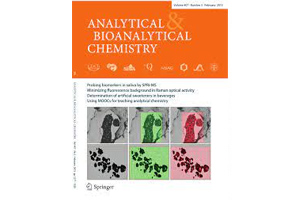Improved Dielectrophoretic Concentration for iDEP
Characterization of electrokinetic mobility of microparticles in order to improve dielectrophoretic concentrationJosé I. Martínez-López et al February 4, 2009
Martínez-López , J.I. ; Moncada-Hernández, H.;. Baylon-Cardiel, J. L.; Martínez- Chapa, S. O.; Rito-Palomares, M. ; Lapizco-Encinas, B.H., Characterization of electrokinetic mobility of microparticles in order to improve dielectrophoretic concentration, Anal Bioanal. Chem. 2009,394, 293–302.
Abstract
Insulator-based dielectrophoresis (iDEP), an efficient technique with great potential for miniaturization, has been successfully applied for the manipulation of a wide variety of bioparticles. When iDEP is applied employing direct current (DC) electric fields, other electrokinetic transport mechanisms are present: electrophoresis and electroosmotic flow. In order to concentrate particles, iDEP has to overcome electrokinetics. This study presents the characterization of electrokinetic flow under the operating conditions employed with iDEP; in order to identify the optimal conditions for particle concentration employing DC-iDEP, microparticle image velocimetry (μPIV) was employed to measure the velocity of 1-μm-diameter inert polystyrene particles suspended inside a microchannel made from glass. Experiments were carried out by varying the properties of the suspending medium (conductivity from 25 to 100 μS/cm and pH from 6 to 9) and the strength of the applied electric field (50–300 V/cm); the velocities values obtained ranged from 100 to 700 μm/s. These showed that higher conductivity and lower pH values for the suspending medium produced the lowest electrokinetic flow, improving iDEP concentration of particles, which decreases voltage requirements. These ideal conditions for iDEP trapping (pH = 6 and σ m = 100 μS/cm) were tested experimentally and with the aid of mathematical modeling. The μPIV measurements allowed obtaining values for the electrokinetic mobilities of the particles and the zeta potential of the glass surface; these values were used with a mathematical model built with COMSOL Multiphysics software in order to predict the dielectrophoretic and electrokinetic forces exerted on the particles; the modeling results confirmed the μPIV findings. Experiments with iDEP were carried out employing the same microparticles and a glass microchannel that contained an array of cylindrical insulating structures. By applying DC electric fields across the insulating structures array, it was seen that the dielectrophoretic trapping was improved when the electrokinetic force was the lowest; as predicted by μPIV measurements and the mathematical model. The results of this study provide guidelines for the selection of optimal operating conditions for improving insulator-based dielectrophoretic separations and have the potential to be extended to bioparticle applications.
Application: Dielectrophoretics, Electrophoresis

